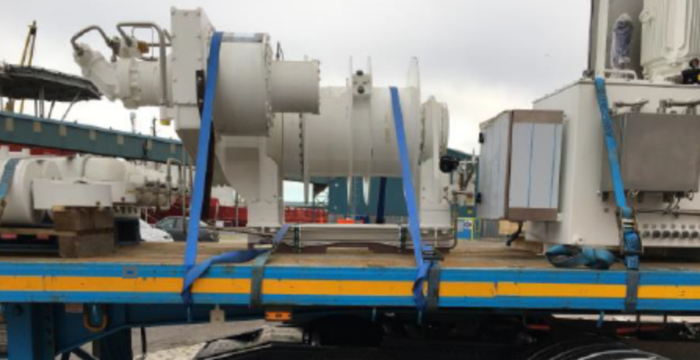According to IMCA, two articulated lorries with 20’ trailers were organised to move equipment, including lifeboat davits, a power-pack, winches and sheave blocks, from one location to another. However, the load of one of the trailers feel as it was inadequately secured.
The incident
The first trailer was loaded inside a shed, and then was driven outside to complete lashings and allow simultaneous loading of the second trailer. During the movement of the first trailer, the free end of a single lashing became entangled in the tractor unit wheels, breaking the strap and enabling part of the load to fall from the trailer onto the roadway.
[smlsubform prepend=”GET THE SAFETY4SEA IN YOUR INBOX!” showname=false emailtxt=”” emailholder=”Enter your email address” showsubmit=true submittxt=”Submit” jsthanks=false thankyou=”Thank you for subscribing to our mailing list”]
Probable cause
The loads were not secured correctly on the trailer, causing a davit winch and two sheave blocks to fall on the road. The loose end of the strap securing the winch and blocks was not stowed correctly.
The driver took the vehicle out of the shed to allow the second collection trailer to access the shed, and drove out of the front yard area, then he took a wide arc left over the middle of the port’s road. A loud bang was heard as a winch and two snatch blocks fell from the vehicle. A worker saw a loose strap flapping on the trailer’s nearside, before hearing the loud bang, the vehicle was too far away for him to do anything.
Other than surface damage, the equipment did not sustain any other serious damages. Additional ratchet straps were placed on the winch for extra security.
Recommendations
After the incident, IMCA made the following recommendations:
- The winch was a heavy piece of equipment with a high and offset centre of gravity, making it an unstable load;
- A conventional pallet was not suitable for this equipment. Consideration should have been given to shipping the items in half height containers;
- There was a failure to effectively secure the load before movement of the truck, and there was poor practice in not securing the free end of a securing strap;
- A dedicated loader or dispatcher should discuss loading arrangements with the driver;
- The driver should remain in a safe area during the loading operation;
- Vehicles with an open flatbed must have their loads secured before entering and exiting the worksite.






























































